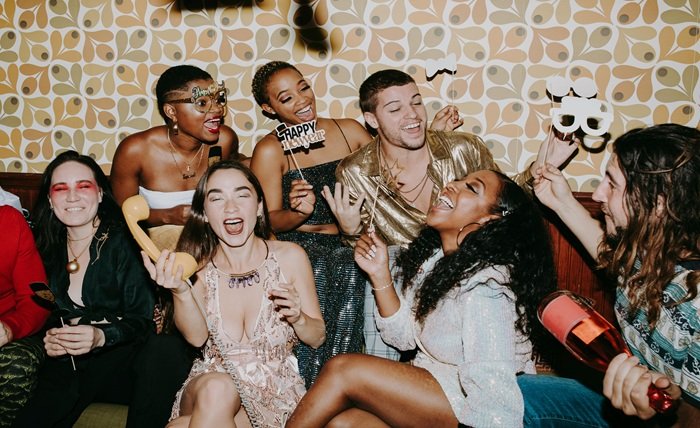The Unfiltered World of Naughty Hentai: A Deep Dive into Anime’s Forbidden Corner

The term naughty hentai often conjures a specific, and sometimes misunderstood, image in the popular imagination. For some, it’s a taboo subculture, hidden away from mainstream view. For others, it’s a vibrant and complex genre of animation and illustration that explores the furthest reaches of fantasy and desire. This blog post aims to move beyond the stigma and provide a thorough, nuanced exploration of naughty hentai. We will delve into its historical roots, deconstruct its vast array of genres, analyze its unique artistic language, and confront the important ethical debates that surround it. Whether you’re a curious outsider or a long-time fan, this journey into the world of naughty hentai promises to be an enlightening one, examining the cultural, artistic, and psychological facets of this provocative medium.
What Exactly is Naughty Hentai? Defining the Indefinable
To understand naughty hentai, we must first define it. In the West, “hentai” is a direct loanword from Japanese that translates to “pervert” or “perversion” and is used exclusively to describe pornographic anime and manga. However, in Japan, the term is more broadly used as a slang for any sexually deviant behavior and is not the primary word for adult cartoons. The Japanese industry typically uses terms like “jūha” for explicit manga or “ero anime” for animation. The Western adoption of the word naughty hentai specifically filters this media through a foreign lens, often emphasizing its “otherness” and transgressive nature. At its core, naughty hentai is a form of animated or illustrated pornography that leverages the limitless potential of the drawn form to depict scenarios impossible in live-action media. It is this freedom from the constraints of physics, biology, and often societal norms, that forms the foundational appeal of naughty hentai.
The very essence of naughty hentai lies in its animated nature. Unlike live-action pornography, it is not bound by the limitations of real human actors, sets, or special effects budgets. This allows creators to envision and realize any fantasy, no matter how elaborate, surreal, or physically impossible. The exaggerated art style common in anime—large eyes, expressive features, dynamic action lines—translates seamlessly into the realm of the erotic, amplifying emotions and physical reactions to a degree that feels both fantastical and intensely engaging. This capacity for exaggeration is a key differentiator for naughty hentai, making it a unique genre of adult entertainment that prioritizes fantasy fulfillment over realism, setting it apart from other forms of erotic media.
Furthermore, the definition of naughty hentai is deeply intertwined with its status as a subculture. It exists in a dedicated ecosystem comprising fan-driven sites like Fakku and HentaiFoundry, massive archives such as nhentai, and communities on Reddit and Discord. For its consumers, it is often more than just pornography; it is a hobby and an interest with its own canon, celebrated artists, and iconic works. This community aspect helps shape what naughty hentai is, constantly curating, discussing, and defining the boundaries and highlights of the genre. It is a living, evolving form of media that responds directly to the tastes and creations of its audience.
From Ukiyo-e to Otaku: The Surprising History of Naughty Hentai
While modern naughty hentai feels like a product of the late 20th and 21st centuries, its artistic DNA can be traced back centuries to Japan’s Edo period (1603-1868). This era saw the flourishing of ukiyo-e, woodblock prints that depicted the “floating world” of pleasure, entertainment, and beauty. Among these were shunga (春画), or “spring pictures,” which were explicitly erotic prints. Shunga was enjoyed by men and women of all social classes and was not considered taboo in the same way modern pornography often is. These works featured exaggerated genitalia and a wide variety of sexual acts, establishing an early precedent for the explicit and fantastical nature of what would become naughty hentai. The line from the exaggerated proportions and narrative-driven eroticism of shunga to the stylized expressions of modern naughty hentai is a direct and historically significant one.
The 20th century brought technological and cultural shifts that paved the way for contemporary naughty hentai. The post-World War II era introduced manga and anime to a mass audience. As these mediums grew, so did their thematic range. Pioneering artists like Osamu Tezuka, the “God of Manga,” included subtle sexual themes and innuendo in their works. By the 1960s and 70s, underground (gekiga) manga began exploring darker and more adult themes, including sexuality. The real catalyst, however, was the home video revolution of the 1980s. The advent of the VHS tape created a private, direct-to-consumer market for adult animation. This allowed studios to produce OVA (Original Video Animation) series specifically for this new market, leading to an explosion of content that formally established the naughty hentai industry as we know it today.
The 1990s are often considered the “golden age” of naughty hentai production. With higher budgets and more sophisticated animation techniques, studios produced works that became iconic within the community. This era also saw the rise of the “otaku” culture in Japan, a dedicated fanbase that consumed, collected, and drove demand for anime and manga, including its adult variants. The globalization of the internet in the late 1990s and early 2000s was the final piece of the puzzle, breaking naughty hentai out of its niche Japanese market and exposing it to a global audience. Online communities and file-sharing platforms allowed Western fans to access, translate, and discuss this media, cementing the term “hentai” in the global lexicon and creating the worldwide phenomenon of naughty hentai fandom we see today.
A Universe of Fantasy: Deconstructing the Many Genres of Naughty Hentai
One cannot simply talk about naughty hentai as a monolith; it is a universe comprised of countless sub-genres and niches catering to every conceivable fantasy. Understanding these genres is key to understanding the medium’s vast appeal. Common tropes include vanilla, which refers to standard, consensual, and romantic-focused content; yuri (female-female relationships); and yaoi (male-male relationships, typically created for a female audience). However, the world of naughty hentai extends far beyond these into more specific and often more fantastical territory, which is where its distinctive identity truly shines.
The concept of monster girls is a cornerstone of naughty hentai fantasy. This genre involves humanoid characters with animal or mythological features, such as catgirls, foxgirls (kitsune), lamias, and centaurs. Series like Monster Musume play with this concept for comedic and erotic effect. Related to this is the tentacle genre, arguably the most infamous trope associated with naughty hentai in the West. Its origins are mistakenly thought to be a loophole to avoid Japanese censorship laws that prohibited the depiction of pubic hair and genitalia (though not penetration). While this is a myth—the laws applied equally to all media—the trope persists as a unique and surreal form of fantasy that separates the medium from live-action. Other popular genres include futanari (characters with both male and female genitalia), BDSM and bondage, and transformation themes.
Perhaps the most important and contentious category within naughty hentai is lolicon and its counterpart shotacon. Lolicon (from “Lolita complex”) depicts characters with childlike or youthful appearances, while shotacon depicts young boys. It is crucial to distinguish that these are depictions of fictional, animated characters, not real children. However, this distinction is the epicenter of the most intense ethical debates surrounding naughty hentai. Proponents argue it is a harmless fantasy that acts as a outlet, potentially even reducing real-world harm, while detractors vehemently condemn it as a form of virtual child exploitation that normalizes pedophilic ideas. This debate is complex and ongoing, and it represents the darkest and most challenging aspect of the naughty hentai universe, a topic we will explore in greater depth later.
Beyond the Taboo: The Cultural Impact and Psychological Appeal of Naughty Hentai
The appeal of naughty hentai extends far beyond its explicit content; it taps into deeper psychological and cultural currents. For many consumers, its primary draw is the safety and control of fantasy. It provides a space to explore desires, kinks, and scenarios that are impossible, impractical, or unsafe to pursue in reality. This can be a healthy way to engage with one’s sexuality without risk of physical or emotional harm. The animated format creates a necessary layer of abstraction, allowing for the exploration of taboo subjects from a safe distance. This psychological distance is a critical component of the appeal of naughty hentai, making it a unique tool for sexual exploration.
Culturally, naughty hentai has had a significant impact, both in Japan and abroad. In Japan, while still a niche market, it is a recognized and commercially viable segment of the larger anime industry. Certain mainstream anime and manga frequently borrow aesthetic and narrative tropes from naughty hentai to add fan service and titillation, blurring the lines between mainstream and adult media. In the West, naughty hentai has moved from an obscure underground curiosity to a well-known, if not fully accepted, part of internet culture. It is frequently referenced in memes, online jokes, and discussions about anime, indicating its pervasive influence on digital pop culture.
From a creative standpoint, naughty hentai has also served as an unexpected incubator for artistic talent. Many renowned anime artists and directors, such as Yoshiaki Kawajiri (Ninja Scroll) and the studio Gainax (Neon Genesis Evangelion), began their careers working on adult OVAs. The technical skills honed in the high-demand, high-turnover world of naughty hentai—from character design and animation to directing and storytelling—have often flowed back into the mainstream industry, elevating the overall quality and ambition of anime. This cross-pollination demonstrates that the influence of naughty hentai is not confined to the bedroom but has tangible effects on the broader world of animation art.
The Art of the Forbidden: Recognizing Artistic Merit in Naughty Hentai
It is easy to dismiss naughty hentai as mere pornography, but to do so overlooks the considerable artistic craft that often goes into its production. Like any art form, it exists on a spectrum from cheap, mass-produced content to works of stunning visual and narrative quality. The artistry in high-quality naughty hentai is evident in its detailed character designs, expressive animation, and creative use of color and lighting to set a mood. The best artists in the field are masters of their craft, capable of conveying intense emotion, dynamic motion, and sensual atmosphere through their drawings.
The narrative structure of certain naughty hentai works also deserves recognition. While many are purely situational, others feature complex plots, character development, and world-building that rival mainstream anime. Erotic visual novels (EVNs), a closely related medium, are particularly known for their deep storytelling, where the sexual content is woven into a larger, often dramatic or comedic, narrative. In these cases, the naughty hentai elements are a part of a holistic artistic experience, not the sole purpose. This demonstrates the medium’s capacity for storytelling that engages the audience on multiple levels, not just the prurient.
Furthermore, naughty hentai possesses its own unique visual language and symbolism. The use of ahegao (an exaggerated facial expression of pleasure), glowing eyes, sparkling effects, and specific camera angles are all codified techniques that communicate specific ideas and intensities to the viewer instantly. This shared visual vocabulary is a testament to the medium’s development as a distinct genre of art. It creates an immediate understanding between the creator and the consumer, a shorthand for desire and ecstasy that is unique to the world of anime and manga pornography. Recognizing this artistic merit is essential for a balanced and fair critique of naughty hentai.
Navigating the Ethical Minefield: Consent, Exploitation, and Censorship in Naughty Hentai
Engaging with naughty hentai responsibly requires a sober confrontation of its significant ethical dilemmas. The most prominent issue, as mentioned, revolves around lolicon and shotacon. The legal status of this content varies wildly across the globe. It is legal in Japan under certain conditions and protected as free speech in the United States, but it is outright illegal in several countries, including Canada, the UK, and Australia, where it is classified as child pornography. The ethical argument is fiercely polarized. One side views it as a thought crime that should be eradicated, while the other sees it as a victimless thought crime that may serve as a harmless outlet for individuals with pedophilic tendencies, potentially acting as a substitute rather than a catalyst for real-world abuse.
Beyond the issue of underage depictions, naughty hentai frequently portrays themes of non-consent, rape, and sexual violence. The standard defense is the same: it is fictional and therefore harmless. However, critics argue that the normalization of these themes, even in a fictional context, can desensitize viewers and reinforce harmful attitudes about sex and consent. The medium often plays with power dynamics and forced scenarios as a core part of its fantasy, raising questions about the relationship between fantasy and reality. Can consuming naughty hentai that features abusive themes influence a person’s behavior or expectations? This is a question without a definitive scientific answer, but it is a crucial one for consumers to consider for themselves.
Finally, the issue of censorship is ever-present. Japan’s obscenity laws, while relaxed in the digital age, historically mandated the pixelation or blurring of genitalia in all commercially sold pornography, including naughty hentai. This has led to the infamous “mosaic censorship” that is a hallmark of the genre. Debates rage within the fan community about “uncensored” vs. censored works, often driving piracy of content from regions with different laws. This legal landscape shapes the very production and distribution of naughty hentai, creating a constant tension between artistic expression, commercial interests, and government regulation. Any discussion of naughty hentai is incomplete without acknowledging this complex ethical and legal framework.
The Digital Evolution: How Technology Shapes the Future of Naughty Hentai
The future of naughty hentai is inextricably linked to technological advancement. The internet has already revolutionized its distribution, creating a global, instantaneous, and often anonymous market. Platforms like Patreon and SubscribeStar have empowered individual artists to fund their work directly through fan subscriptions, bypassing traditional studios and allowing for more niche and personalized naughty hentai content to thrive. This democratization has led to an explosion of diversity in the genre, as artists can now cater directly to specific audience desires without needing mainstream approval.
The next frontier is undoubtedly virtual reality (VR) and artificial intelligence (AI). VR naughty hentai is already a growing niche, offering an immersive experience that traditional 2D animation cannot match. The ability to “step into” a fantasy world and interact with characters in a three-dimensional space represents a quantum leap in the medium’s potential for engagement. Simultaneously, AI image generation is beginning to disrupt the creative process. Tools are now capable of generating high-quality, customized naughty hentai images based on text prompts, raising questions about the future of human artists and the potential for an infinite, on-demand stream of personalized adult content.
However, this technological progress brings new ethical challenges. AI models are often trained on the work of human artists without their consent, leading to issues of copyright and artistic theft. Furthermore, the potential for AI to generate deeply problematic and illegal realistic imagery, even if trained on anime styles, is a serious concern. As technology makes the creation and consumption of naughty hentai easier and more immersive, the community and society at large will be forced to confront these new dilemmas, shaping the ethical boundaries of the genre for decades to come. The evolution of naughty hentai is a story that is still being written, byte by byte.
Conclusion
The world of naughty hentai is a profound contradiction: it is both art and smut, fantasy and reality, liberation and exploitation. It is a multi-faceted subculture with a rich history, a diverse array of genres, and a significant cultural footprint. To dismiss it outright is to ignore its complexity and its role as a outlet for human desire and creativity. To celebrate it uncritically is to ignore the serious ethical questions that surround some of its content. A mature understanding of naughty hentai requires holding both of these truths at once. It is a genre that holds up a distorted, animated mirror to our deepest fantasies and fears, and its continued evolution will undoubtedly continue to challenge, provoke, and fascinate.
FAQs
1. Is watching naughty hentai considered cheating or harmful to a relationship?
This depends entirely on the boundaries established within the relationship. For some couples, consuming naughty hentai is a private activity no different from reading an erotic novel and is not considered cheating. For others, it may violate trust, especially if it involves interactive elements or replaces intimacy. Open communication with your partner is essential to navigate this issue.
2. What’s the difference between hentai and pornography?
Naughty hentai is a subgenre of pornography. The key difference is its medium: hentai is explicitly animated or illustrated, while pornography most commonly refers to live-action. This fundamental difference allows naughty hentai to explore fantastical, impossible, and exaggerated scenarios that live-action cannot.
3. Is it legal to watch and possess naughty hentai?
In most countries, yes, provided it depicts only consenting adult fictional characters. However, legality becomes complex and illegal in jurisdictions that have laws against drawn depictions of characters that appear underage, even if they are fictional. It is crucial to be aware of the specific laws in your country.
4. Can someone become addicted to naughty hentai?
Yes, as with any form of media or pornography, compulsive consumption of naughty hentai can become addictive behavior. This is typically characterized by it interfering with daily life, responsibilities, and real-world relationships. If consumption feels uncontrollable or is causing distress, seeking professional help is recommended.
5. Why does so much naughty hentai feature non-consensual themes?
This is a complex issue rooted in fantasy and power dynamics. The anonymity and safety of animation allow for the exploration of taboo themes, including power imbalance and loss of control, which are common fantasies. It is vital to remember that these are fictional narratives and do not reflect acceptable real-world behavior, where consent is paramount.






